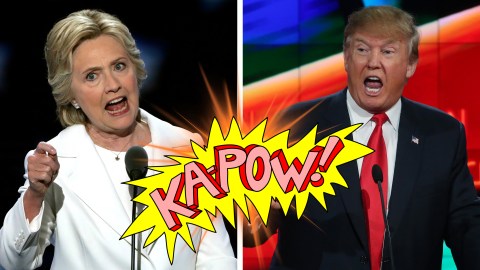Fake News Did Not Affect the Election, Stanford-NYU Study Finds

Despite the high volume of fake news stories on social media, new insights suggest they did not influence the outcome of the election. Rather, their impact on voters was negligible, according to a study by economists Matthew Gentzkow of Stanford University and Hunt Allcott of New York University.
Indeed, many fake new stories performed very well online. An analysis by BuzzFeed News found that fake news stories about the election consistently performed better on Facebook than real ones: more people read, shared, and discussed them. BuzzFeed editor Craig Silverman reports:
During [the final three] months of the campaign, 20 top-performing false election stories from hoax sites and hyperpartisan blogs generated 8,711,000 shares, reactions, and comments on Facebook.
Within the same time period, the 20 best-performing election stories from 19 major news websites generated a total of 7,367,000 shares, reactions, and comments on Facebook. (This analysis focused on the top performing link posts for both groups of publishers, and not on total site engagement on Facebook.)
With respect to engaging the minds of readers, fake news stories seem to have outdone real ones.
Nevertheless, Allcott and Gentzkow’s findings demonstrate how little the real impact of fake news stories was on voters and the outcome of the election. Their research draws from a robust and dynamic range sources, including multiple prominent fact-checking websites, empirical data on the relative popularity of various media outlets, existing research, and web-browsing data.
Much of the findings, however, turn on a 1,200-person post-election survey they conducted themselves online. Through it, they sought to discern a handful of key insights, including whether readers remembered the fake headlines and whether they thought the headlines were true.
The study found that, even though fake reports favoring Donald Trump vastly exceeded those favoring Hillary Clinton, fake headlines did not have a major role in swaying the election. Only 14% of respondents to the online survey reported social media as their primary source of news. Furthermore, the authors point out that those surveyed could hardly remember the fake headlines with which they were presented. The authors write:
[T]he average American saw and remembered 0.92 pro-Trump fake news stories and 0.23 pro-Clinton fake news stories, with just over half of those who recalled seeing fake news stories believing them.
Hits on social media aside, the lasting influence of these stories seems to have been nearly negligible. To put this into perspective, they note:
For fake news to have changed the outcome of the election, a single fake article would need to have had the same persuasive effect as 36 television campaign ads.
Perhaps, then, fake online news stories are not as big of a threat as they may seem to be. While they certainly can function to mislead and misinform, the study reminds us that television still remains a powerful force in the news media. Furthermore, it forces readers to resist easy, reductive answers to the question of how Trump earned so many votes.





